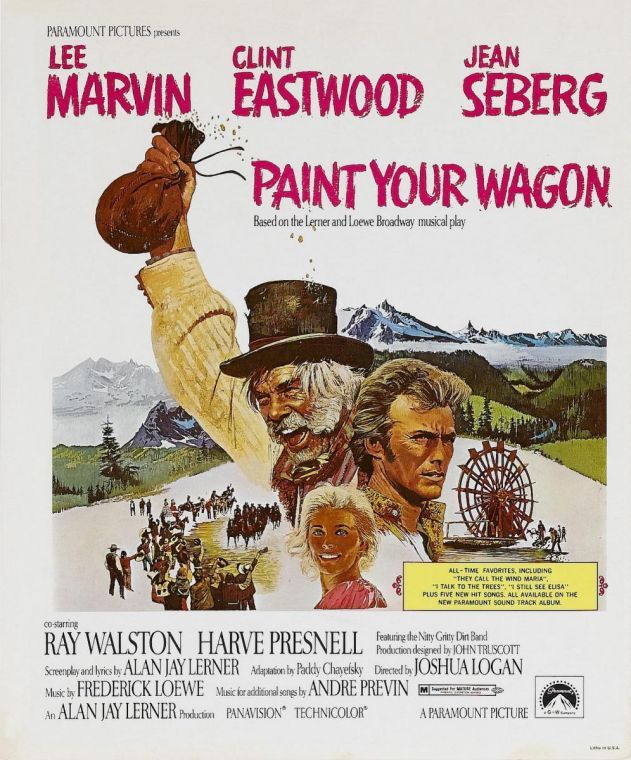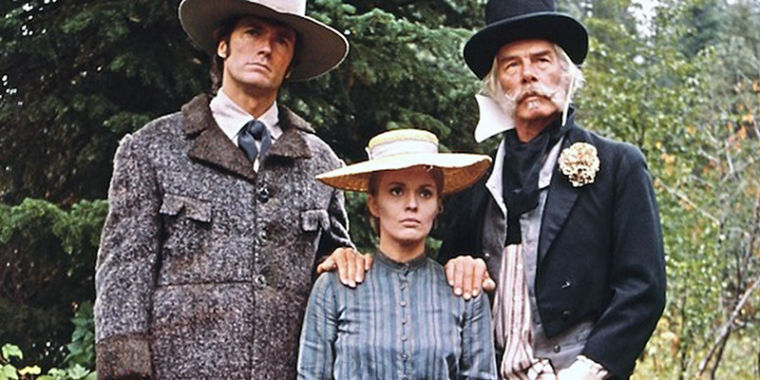When you think of Clint Eastwood, one of the iconic, stoic badasses he’s played — Dirty Harry, the Man with No Name, Will Munny — probably comes to mind. So it’s shocking to learn Eastwood has dabbled quite a bit in music.
A quick scroll down his IMDb page reveals that he composed the scores of all his movies since 2003, and that he’s directing the adaptation of Broadway musical Jersey Boys, which opens Friday. And, lest we forget, he also unironically crooned a love song to a car in Gran Torino.
None of this recent work, however, tops the bizarre spectacle that is 1969’s Paint Your Wagon, a musical romanticizing the gold rush that pairs Lee Marvin and Eastwood for more than two-and-a-half hours of uncomfortable singing and dancing.
Paint Your Wagon, a title that is either shockingly banal or euphemistic depending on your level of maturity, sadly features very little in the way of wagons or the painting thereof. Instead, it’s about how a crusty old prick (Marvin) enters a three-way romantic relationship with a naive young chump (Eastwood) and a generically spunky woman (Jean Seberg) set against the backdrop of the gold rush.
Eastwood is the surprise of the bunch, with a remarkably good singing voice that’s a far cry from the gravelly, growly croaking from Gran Torino. Marvin, on the other hand, is exactly as you’d expect: not quite William Shatner levels of embarrassment, but definitely within spitting distance.
As a movie musical, Paint Your Wagon is pretty appalling. The convoluted plot is nearly impossible to follow, while much of the film is bathed in a dense fog that smears the images into an unpalatable mess.
And yet Paint Your Wagon is impossible to hate. For one thing, it’s often riotously (and unintentionally) hilarious. It’s a movie so profoundly out of touch (even when it originally released) that age only makes the queasy spectacle more endearingly goofy.
From the inept attempts at concealing the rampant homoeroticism to Marvin’s utterly half-assed performance, Paint Your Wagon is a constant joy to behold.
The movie also boasts some genuinely catchy tunes. “They Call the Wind Maria” is an oddly beautiful little song snuck in the middle of an otherwise very unbeautiful movie, while Marvin’s show-stopping “Wand’rin’ Star” is immensely charming despite Marvin’s ineptitude.
Admittedly, none of these tunes can top The Simpsons’ pitch-perfect send-up of this movie, but they’re much, much better than any songs sung by Marvin and Eastwood should be.
The same goes for the movie as a whole: Paint Your Wagon is just an entertaining little anomaly in the career of Hollywood’s last cowboy. While Eastwood might still be embarrassed by it, Paint Your Wagon does offer a rare glimpse at a different, softer side to Eastwood the actor, making it essential viewing for any hardcore Eastwood fans.
“Paint Your Wagon, a title that is either shockingly banal or euphemistic depending on your level of maturity, sadly features very little in the way of wagons or the painting thereof.” — Warren Zhang




